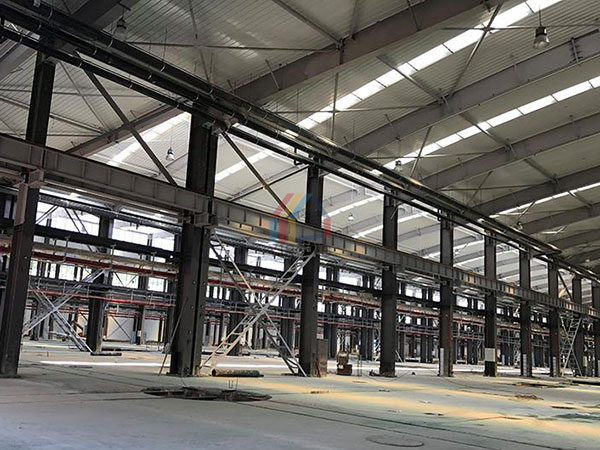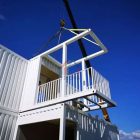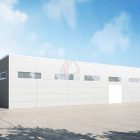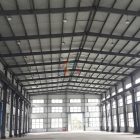What are the technical requirements for the installation of 20,000㎡ of industrial workshop steel structures?
Steel structure is a structure composed of steel materials and is one of the main types of building structures. The steel structure is mainly composed of steel beams, steel columns, steel trusses and other components made of section steel and steel plates, and the components or parts are usually connected by welding seams, bolts or rivets. Canglong Group’s steel structure production and installation company is widely used in large industrial workshop, venues, super high-rises and other fields because of its light weight and simple construction.

Technical requirements for the installation of industrial workshop steel structure
1. Before the installation of steel structure industrial workshop, various records and reports such as the component factory certificate, material test report, and non-destructive inspection side report of the weld should be checked to check whether the appearance of the component meets the design requirements, and the problem should be corrected immediately.
2. Draw a flow chart for the installation of industrial workshop steel structure, and install it according to the flow chart. Before installation, the pre-embedded accuracy of all anchor bolts should be checked, and if it is found that its spatial position is different from the design drawing, it should be corrected in time to ensure the accuracy of the anchor bolt position.
3. The installation sequence of steel components should be carefully designed to form a rigid body as soon as possible, so that the installation can continue to maintain a stable state, and it is also convenient to eliminate errors during the installation of steel structures.
4. Necessary check calculations should be carried out for the hoisting of steel components in industrial workshops, and measures should be taken for components with small lateral stiffness to prevent distortion and damage.

5. During the installation of the column or the steel structure of the industrial plant, the beams and supports should be installed in time, and if necessary, the cable wind rope should be added for temporary fixation.
6. In the installation of steel columns, attention should be paid to controlling the influence of temperature difference on the verticality of steel members. Adjust the side amount based on the verticality of the standard column determined first, and review other columns.
7. When the columns are installed, the positioning axis of each column must be directly guided from the control axis of the ground, and the column top axis of the next column shall not be used as the positioning axis of the previous column.
8. The welding environment of the steel construction installation site, the welding position, and the high-altitude operation, the influence of air temperature and humidity is unfavorable, because the cable is prone to weld defects. Therefore, corresponding measures must be taken to overcome the influence of these unfavorable factors, and the rework and repair of unqualified welds shall not exceed two times.
9. The torque wrench used for high-strength bolts must be calibrated and calibrated before use, and should be calibrated after use. Once it is found that the calibration torque error exceeds the allowable range, the bolts tightened by the wrench are all unqualified. The high-strength bolts should be inspected after the final tightening. The nuts can be knocked one by one by the hammer knocking method, and the torque should also be inspected.

10. After the industrial workshop steel structure is installed and corrected, the gap between the column bottom plate and the top surface of the foundation should be grouted for a second time, so that the bottom plate and the foundation surface are in contact with each other tightly.
11. After the installation of the entire steel structure is completed, the acceptance shall be carried out according to the requirements of the quality acceptance specification.












